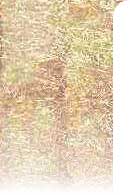 | |

|
Research in Progress Research in sustainable building technology is currently in progress at Penn State and the University of Washington and is focused on strawbale construction technology and applications. This research program is largely accomplished through the course activities.
Penn State Research Program Prototype Home design: Three prototype demonstration homes have been designed and constructed. The goal of these projects was to begin to demystify and systemize the century-old technique of loadbearing strawbale construction. Design details and methods were chosen that remained well within documented performance of laboratory testing and existing strawbale building codes. Three goals guided the design and subsequent refinements and improvements to the demonstration projects:
Loadbearing Strawbale Technology: The objectives of the current experimental program are to characterize the mechanical behavior of a straw bale wall, to the point where predictions of the behavior of wall systems under instantaneous and short-term loading are possible. A further goal is to determine optimum densities for straw bales, recognizing that higher densities have better mechanical performance, but poorer thermal performance. The goals for current research are to (1) Characterize the mechanical properties for implementation into analytical models, (2) Establish correlations between material properties and a simply determined physical parameter, such as density, and (3) Investigate effect of reinforcing configurations on individual bales. Eventually, the performance under a controlled loading program will be predicted using the analytical model for different wall systems. Following the development of these predictions, prototype wall systems will be constructed in the field and subjected to a testing program to verify the predictability of material assemblies performance. Performance of existing loadbearing structures: The performance of three prototype loadbearing structures in South Dakota and Montana are being be monitored and the application of five additional loadbearing structures have been documented. The objectives of this evaluation are (1) to detect settlement occurring in the loadbearing wall elements, (2) identify problems with moisture intrusion or condensation in straw walls that present risk to long-term wall performance, and (3) document gravity load and bale density data on existing loadbearing applications for validation of analytical models. \Data is gathered by students and faculty in each of the homes to detect settlement of loadbearing walls due to compressive loading. Penetrations are made into straw walls at typical problematic areas near wall base and openings and to permit insertion of moisture meter probes. Moisture levels approaching 19% moisture content are noted as potential sources of wall decay and failure. Penetrations are repaired after data each location has been assessed. Qualitative data is also collected through observation and post-occupancy interviews, and targets stucco cracking, the condition of spanning elements, and wall details at interfaces between strawbale walls and other building systems. Differences in construction methods will be classified for each of the above categories of data, as the prototype homes were constructed a year apart with similar bales, but different compressive loads. The types of veneer, heating methods, and moisture protection are also varied, and allow multiple techniques to be studied, and recommendations made on details, material, and techniques that perform better than others. University of Washington Research Program Strawbale Workshop Educational Materials: This program seeks to develop material that assist with educational process of transferring strawbale construction and other sustainable building methods to American Indian Tribes. The current focus of this research is the design of student driven workshop methods, and the production of video-based teaching modules. Sustainable Community Design: This program seeks to develop a plan for functional and resource efficient tribal communities. The specific goals are to explore how efficient configurations of homes and community buildings can be combined with renewable energy technology to create sustainable and self-sufficient communities. |
[ Introduction ] [ Course Info ] [ AE 297H / AE 497H ] [ AE 597 ] [ Research Overview ] [ Current Research ] [ Completed Projects ] [ Partners ] [ Get Involved: Students ] [ Get Involved: Alumni ] Direct questions and comments to the webmaster. Photos: Kate Moxham. |
|